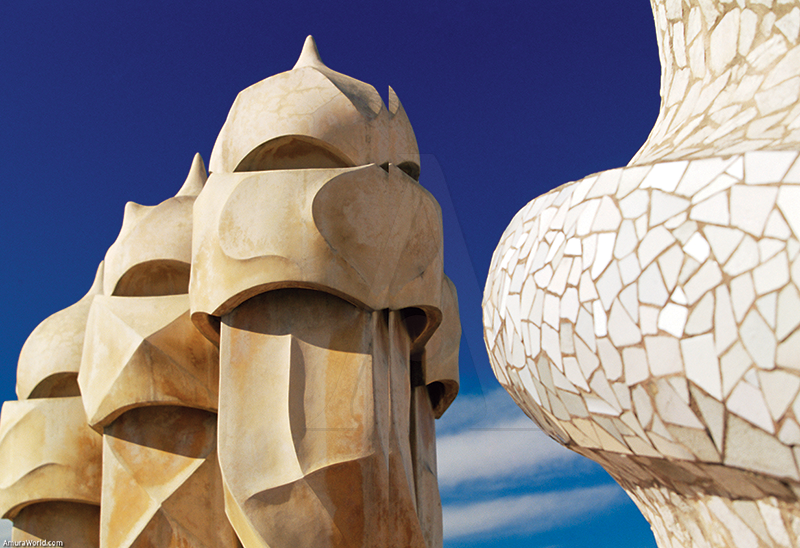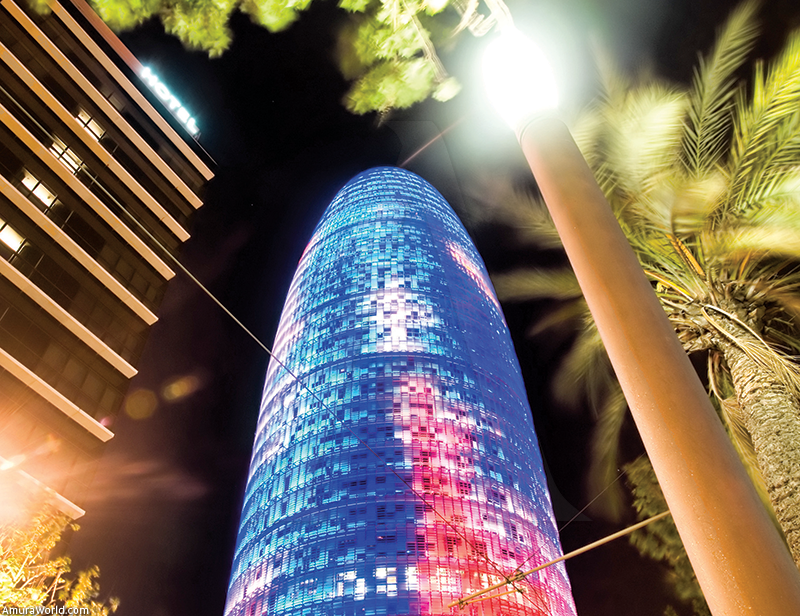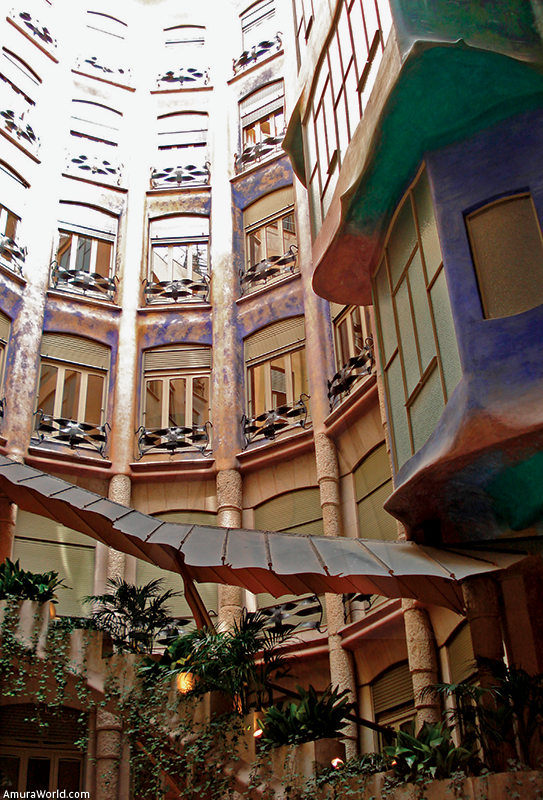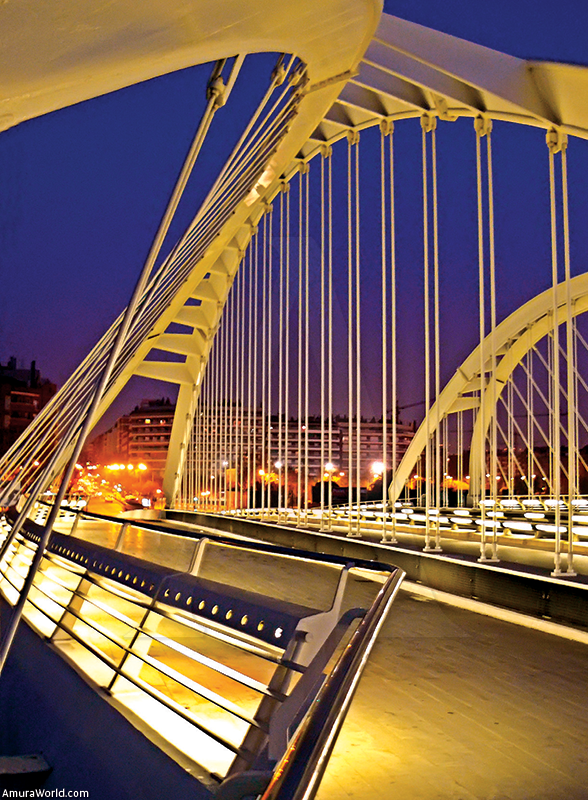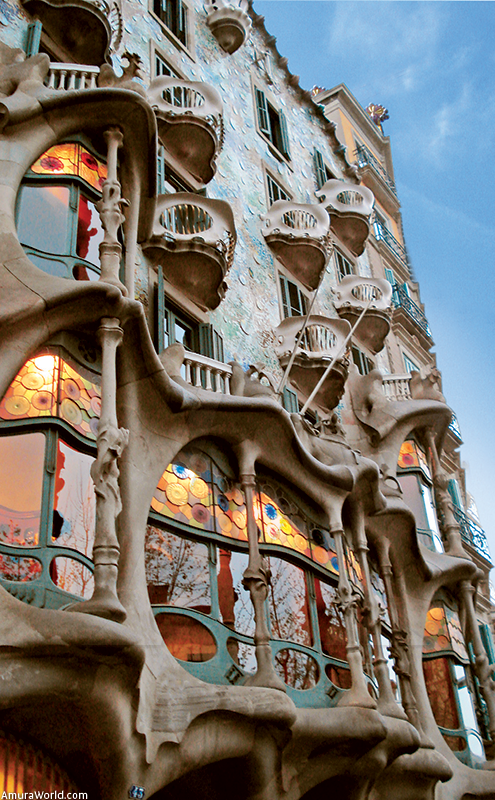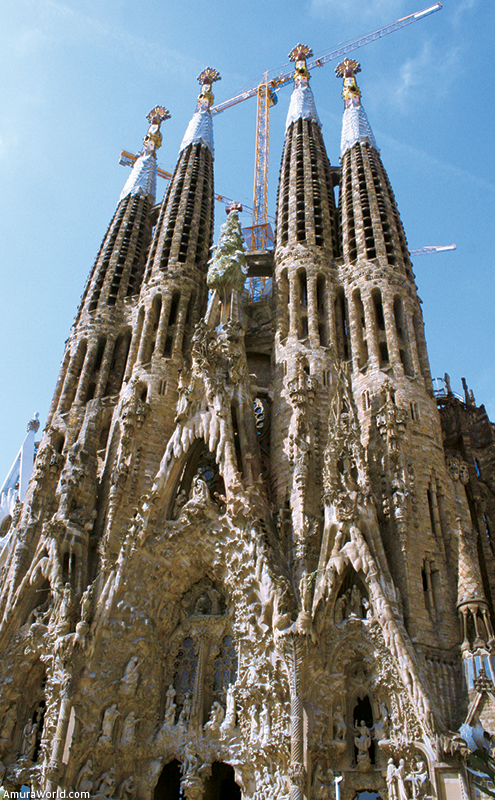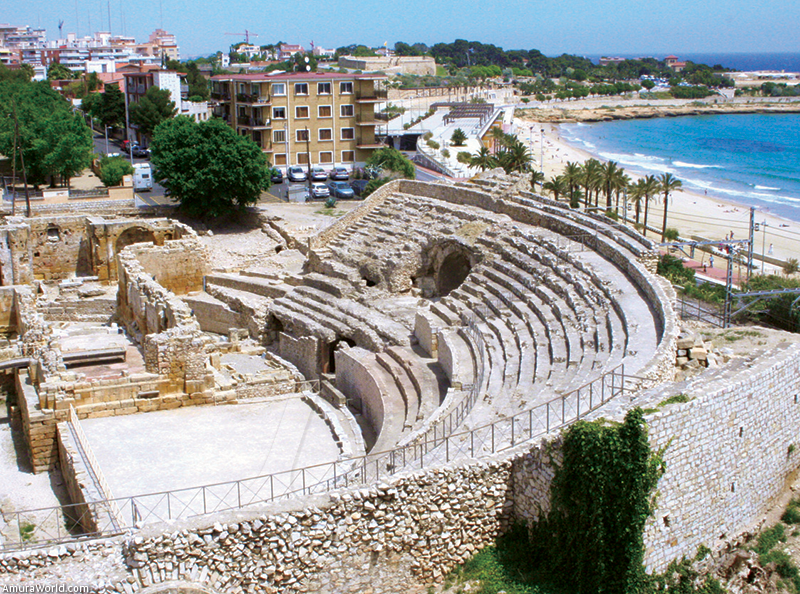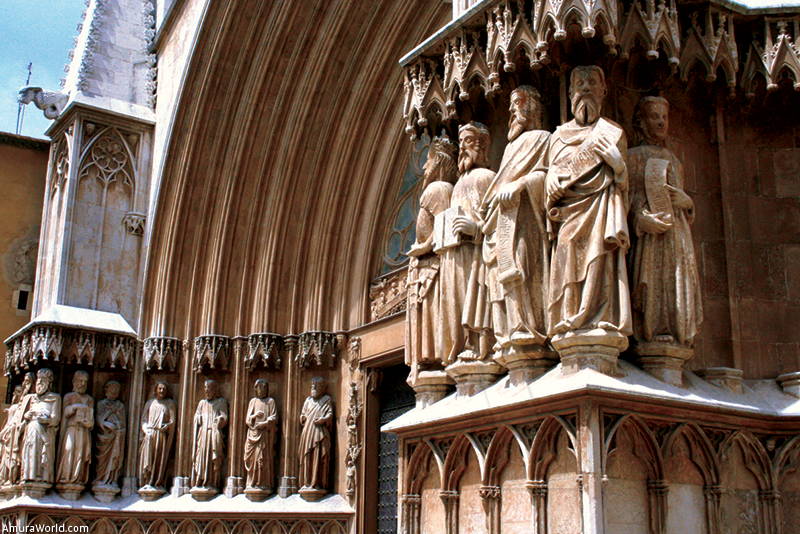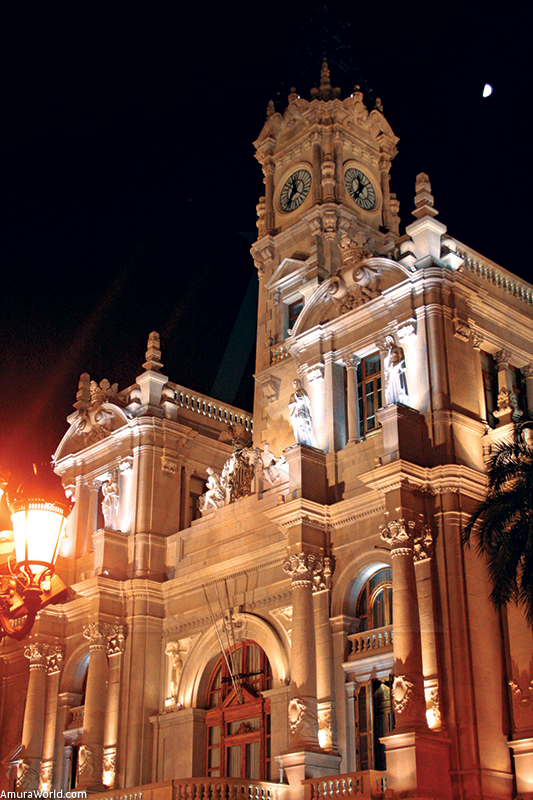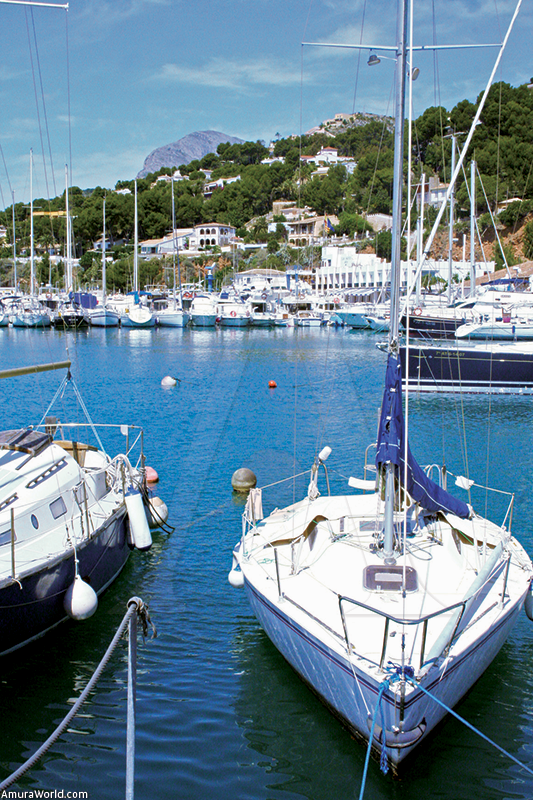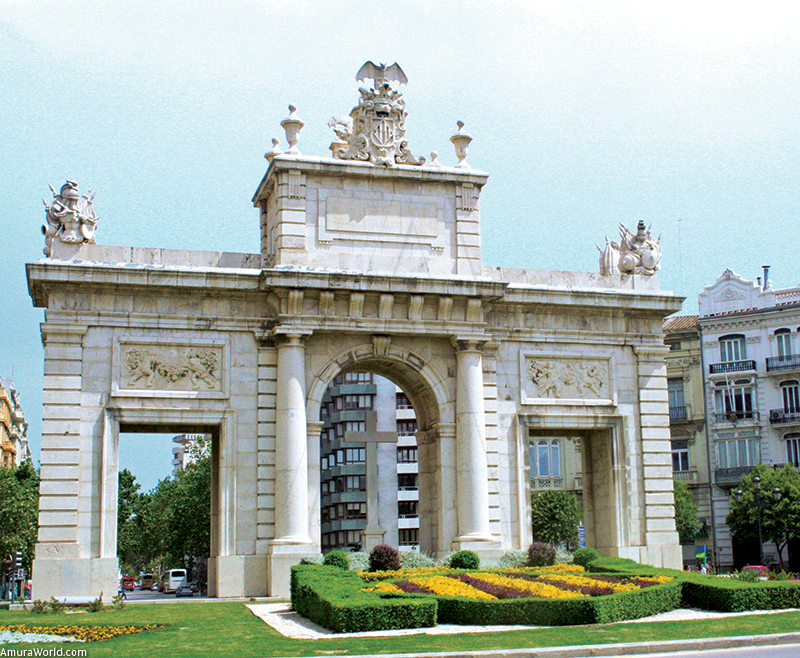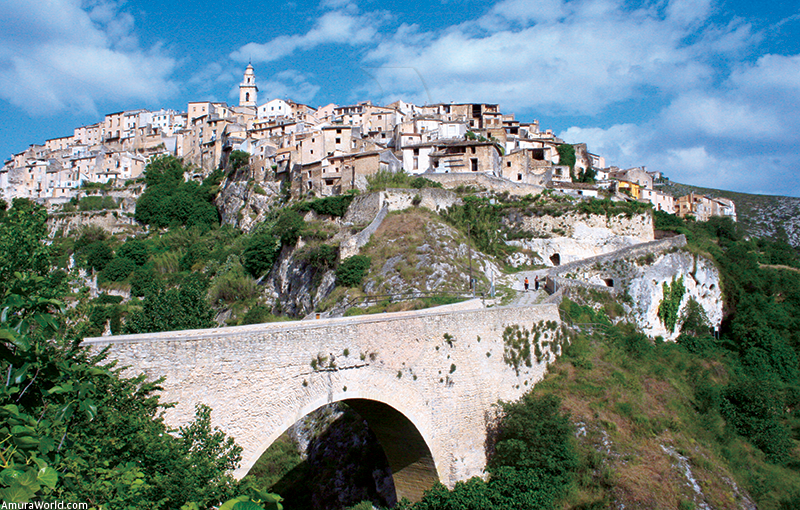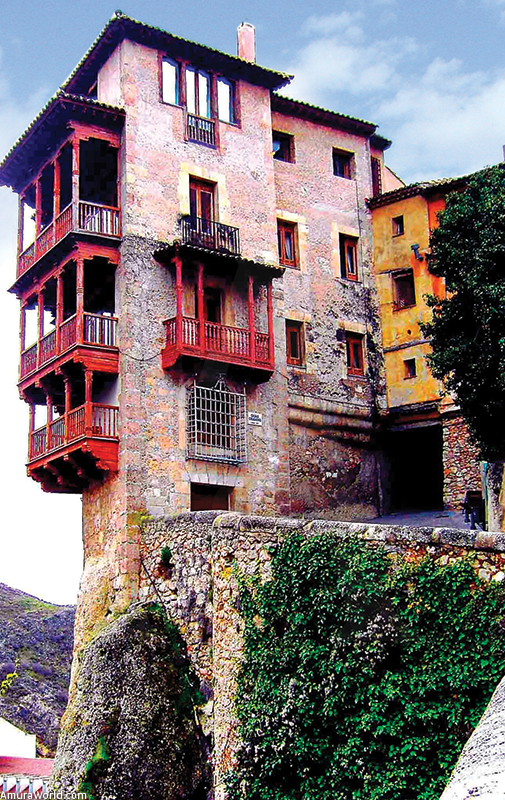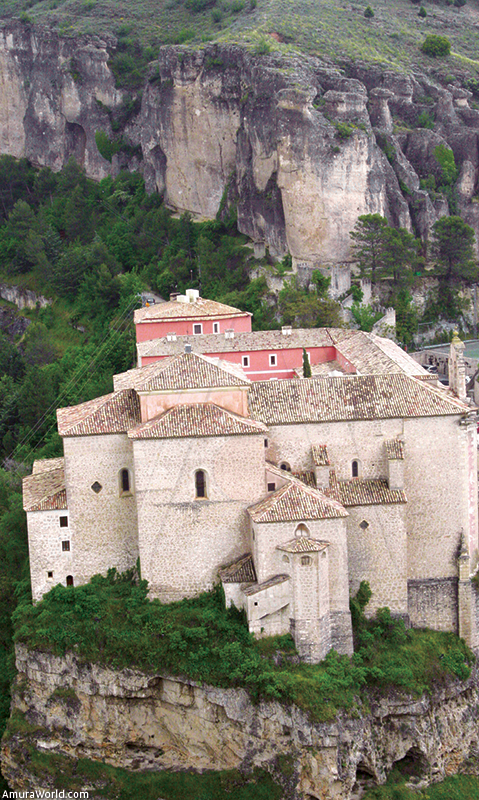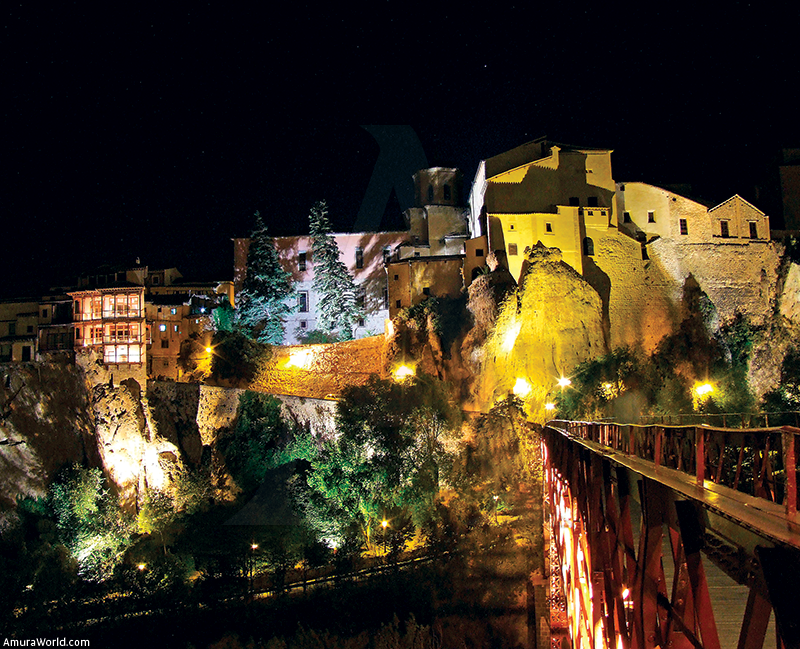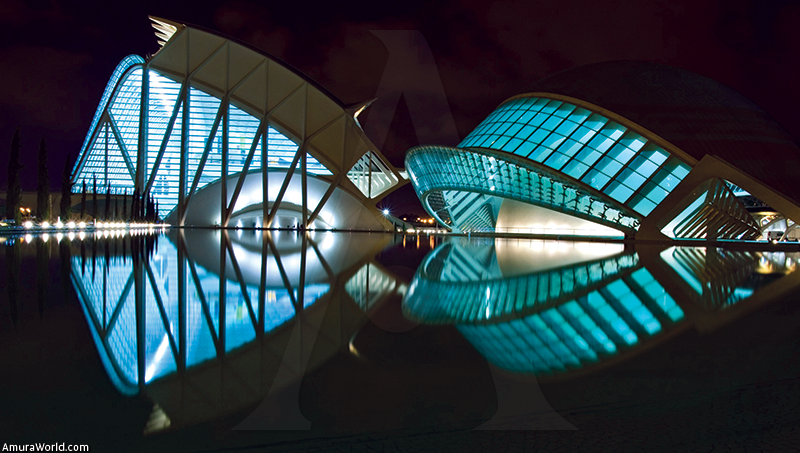In the west coast, the Mediterranean undulates throughout a coast in which the history, the culture, the landscapes and the easy life paint an exquisite environment.
From the majestic Barcelona to the cozy Valencia, sailing and discovering the way through the mountains that carry truly architectonical and historical treasures, the region gives in its personality as a real book of art.
Barcelona
City of the past and the future, its everlasting celebration environment fills the alleys of the old city, inhabited since the Romans, and actually with its bars, restaurants, the gothic district and The Rambla.
Its harbor offers a perfect anchorage to prepare the trip, with its huge marinas, in the heart of the city that never sleeps.
The cathedral (1298-1454), reigns the gothic district, is one of the master pieces of the Spanish gothic, of modest dimensions and very distinguished. The Oum Com Balla ritual is made in its elegant fountain, leaving an egg suspended up the spurt. The interior is arrogant, the cloister is a wonder.
The Sant Felip Neri Square is surrounded by ancient guilds, the house of the l’Ardiaca shines with its Renaissance style of the XVIth century, the Plaza del Rei impresses by its architectonic group where we admire the Palau Reial Major, the Palau de Lloctinent, the Chapel of Saint Agatha.
The Rambla is the most symbolic place of Barcelona, there is where tourists and locals fit in, from the dullest to the most exuberant of the urban fauna, and it is covered from the City Hall Square to the statue of Columbus which dominates the harbor.
Barcelona is also the modernism of Gaudi and his contemporaries such as Puig i Cadafalch, Domènech i Montaner, that have left their mark in the buildings of the zone of the l’Eixample.
The Passeig de Gracia invites you to travel through the Catalonian modernism, with beautiful buildings, the Bone of Contention, the Carrer Roger de Llúria, Valencia, Gerona, and The Diagonal avenue. Places in the city for admire the balcony curves, the romantic figures that decorate the buildings, and the forge that undulates.
The Güell Park, entrusted by Eusebi Güell, is one of the most attractive places for admiring the pieces directed by Gaudi. The Room of the Hundred Columns and the Fountain of the Dragon stand out, showing colorful mosaics and ghostly shapes.
The star of Barcelona is the Sacred Family, started in 1882. Gaudi’s master piece that dominates the city with its towers of more than one hundred meters of height and outlandish shapes.
The Door of the Faith is presided by de Sant Joseph’s anagram, the Door of the Hope presents the anagram of Mary, the facades are decorated with stylized figures, its silhouette launches in Barcelona’s sky as a crooked angel.
Gaudi died ran over by the tramcar in 1926 and, after several architects, Jordi Bonet is the one that is actually in charge of the work, and the sculptor Joseph Maria Subirachs is in charge of the sculptures.
Barcelona is also a leisure life, bars, the Rambla, restaurants, strange places and that everlasting party attracts people from al over the world. Who does not know Barcelona has not lived something important.
From Barcelona to Tarragona
The relentless sun reflects in the blue of the Mediterranean and a great wind accompanies us along our navigation to Valencia.
Skirting the flat coast of the Prat, we bordered the hills until we arrive to Sitges, where we tied up in the small marina. That beautiful village transformed in a great touristic center preserves its historic center with its alleys, the Palace of Maricel and the church that dominate the small rock.
It is worth to visit the Maricel Museum and enjoy its beaches of crystal clear waters, the calas and the night life. Sitges is a fashion place that preserves the charm and where the housing is of the most expensive of Europe.
Following this coast, bordered of small green hills and cliffs, we reach Tarragona, the great city over a small headland, and dominate the ancient city surrounded by its wall.
Its alleys sleeping under the heat take us to discover the cathedral, enjoy great food and the great roman theater scratched in the rock, watching the sea. Tarragona is a modern city with an important harbor and a perfect marina.
From Tarragona to Peñiscola
We discover the cozy Port of Cambrils, with its great marina, its maritime tour with the best restaurants and it old alleys that testify a long past.
We continue towards the south throughout the flat coast of the golf of Sant Jordi until going around the swamp zone of the delta of the Ebro. Its channels and lagoons form the Natural Park of the Ebro, perfect shelter for the aquatic birds, where there are towns that rise their churches to dominate the prairie: Riumar is the manager of the mouth in the Cape Tortosa and Sant Carles de la Rapida, at the bottom of the Alfaques Bay, stands out for its beautiful marina, its intense Arab and medieval past and its church.
The mountains go down toward that coastal prairie where the swamps gave pass to touristic centers such as Vianaros and Benicarlo, with hotels and condominiums in first row in the long and beautiful beaches of fine sand.
It arises then Peñiscola, true enigma. A fortified town over a rock that floats in the sea, tied to land by a thin filament of land, crowned by its fort that dominates the white town of steep alleys and monumental doors.
Peñiscola invites to imagine the past starred by the knights and the fortresses, by the long Arab occupation, by the confinement of the Pope Luna, Benedict XIII, fighting for the unity of the Catholic Church. And it is a town that stands out for its charm, its lighthouse, its wall that falls into the sea, the arrival of the fishing boats and the fish market, its beautiful harbor and the sweetness of the life within the wall.
Unusual villages and Teruel
We left the sailboat in Peñiscola and visit the mountain villages until arriving to Teruel.
Morella, fortified villa, arising in the mountain range, dominated by its castle, surrounded by two and a half kilometers of high walls passable by six colossal doors. Village of legends, invite to admire its stepped streets, the gothic Church of Saint Mary, the Convent of Saint Francisco, the porches and the medieval aqueduct.
Mirambel, peaceful country houses prostrated in a valley, preserve its medieval line inside the wall built in the XIII century. Its large stone houses, the Saint Margaret Church, its convents and hermitages are jewels of the Mastership, a mysterious window in the past that listens to the water passing through the old washroom.
Cantavieja, redoubt in the Carlist wars of the XIXth century, dominates the mountain range from the top of its hillock finished by the remains of the fort. Its harmonic square with porches decorates with the forged iron balconies, the City Hall and the baroque Church of the Asunción flanked by the tower.
Teruel is the city of legends and Mudejar towers. The bull is its symbol; Teruel lovers fill each corner with the history of its impossible and tragic love. The Mudejar art (Moslem artistic tradition developed in a Christian society) decorates the small great city where the fine dining is a typical Aragonese art that is part of its charm.
The Mudejar towers of the belfry that mark the old centre were decorated with ceramics and Arab motifs created by bricks and the cathedral surprises by its tower, the coffered ceiling gothic-Mudejar and its plateresque altarpiece.
The Torico Square seduces by its main doors and modern houses, the Church of Saint Pedro, ancient mosque, enchants for its vault richly decorated, the viaduct (XVIth century) impresses by its strength and what passionate the most is the mausoleum of the famous lovers.
Albarracin, authentic village-museum enclosed in its wall over the rock of the nook of the Guadalaviar River, surprises for its beauty. The castle of Arab origin dominates the village; the houses hang from the rocks, and the alleys transform into staircases to reach charming corners guarded by the wall.
Its Renaissance church, the Episcopal Palace that houses a fabulous museum, the large houses and palaces, the windows forge, the cozy Major Square and the impressive eaves of the roofs make of Albarracin an enclave with medieval atmosphere and Arab flavor. It is considered the most beautiful village of Spain.
The “Casa Santiago” is the best restaurant of the region and you must try the almohábanas, an example of the Arab confectionery.
From Peñiscola to Valencia
We sail along the natural hills where the palm trees grow, protected park where Arab towers arise, adorned with lovely coves. The beautiful nature goes round the blue sea and the beaches protected by the mountains.
We reach Benicassim and its great hotel and condominium development along its beaches, Castellon with its grand harbor and the port of Sagunt where we tied up to visit the roman city that shines for its theater (century I), its castle that dominates the Valencian orchard perfumed by the orange blossom, its wall and the remains of the medieval city, its Main Square, the Jewish quarter and the churches.
Finally we enter in the great harbor of Valencia, recently restored for the America Cup and display a wonderful organization and image.
Valencia
Count Valencia, the ferocious, the luminous and resourceful, is a real puzzle, a medieval and futuristic.
Created by the Romans, its ancient centre preserves the huge medieval doors; the Lonja (1482-1533) dedicated formerly to the silk commerce and decorated by elegant twisted columns that support the roof’s arcade and the gothic monuments that illustrate the mercantile power of the city.
Its modern style markets accompany the buildings of the same time and in the lace market the ladies practice the arte of the bobbin lace.
The Palace of the Marquis of Two Waters impresses by its ostentatious alabaster facade and is the king of that city of great elegant country houses where we also visit the Royal Basilica, the Convent of Carmen, the museums, the alleys and the squares.
The Cathedral (1262-1356), synopsis of several styles, raises its famous Tower of Miguelete, decorated with splendid frescos and encloses a magnificent museum where we admire the Saint Chalice.
The night life is concentrated in the Carmen Quarter, Playa del Grao and Ciutat de les Arts i de les Ciéncies, wonderful creation that attracted the glances of the whole world over Valencia with its futuristic architecture designed by Santiago Calatrava.
From Valencia to the Cape of the Nao and the mountain villages
Our last day of navigation took us to discover the long beach that protects the great lagoon of the Natural Park of the Albufera to the south of Valencia, passing the Tower of the Cap, the ports of Cullera, Grandia and Oliva, until discover the charming harbor of Denia, with its fort and excellent tie up, from where the ferries to Ibiza depart.
Passing the small Cape of Sant Antoni, where the mountains reach the sea, we enter into the Javea Bay to visit the beautiful Cape of the Nao, with its impressive cliffs mounted by ostentatious mansions, its beaches and the island de Portitxol.
The ancient town of Javea seduces for its quiet atmosphere while the beach stirs up with the restaurants, the crowd and the beautiful marina where we tied up our sailboat.
In our way back to Madrid we visit the mountains of that Valencian region to discover the beautiful Valley of Montaverner, where we ate the best cherries, until arriving to Xativa.
Here the painter José Rivera “the Españolito” and the pope Borja Alejandro VI were born. The city preserves a rich artistic heritage, as the Renaissance collegiate church and the Royal Hospital, at the feet of its huge castle with thirty towers, four fortified doors and its wall that goes down the mountain, fruit of the Spanish-Roman-Arab fusion.
We continue to Bocairent which dates from the Iberic time, conquered by the Romans, and that preserves its town-planning Islamic model. The Pont Nou Bridge allows to cross the cliff and to have a fabulous view of the village over a rock. We visit its church, its museums, and its steeped streets.
Its bull fight ring scratched in the rock in 1843 and the Covetes dels Moros (fifty-three cavities artificially excavated in the rocky wall of the Barranco de Fos) stand out, surely old troglodytic houses or sepulchers.
Cuenca
Already in Castilla La Mancha we visit that important city. Created by the Arabs, that fortified villa was conquered by Alfonso VIII in 1177, preserving its splendor until the XVIIth century. It fell in the forgetfulness until its monumental zone was discovered by the tourism, and was declared City World Heritage in 1996.
Settled over a rock, dominated for the castle, its bay work of streets, squares and corners visits the old houses with lattice windows, churches, and convents while the rounds allow admiring the splendid spectacle of the sickles of the Jucar and the Huecar.
Here the convent of Saint Pablo (XVIIth century) rises, today state-run of Tourism, tied to the city by a large bridge from which we find the best view of the hanged houses. The interior o the cathedral impresses for the altars, the forge and the coffered ceiling soffits.
Avant Garde Design
Calatrava and the architecture
Santiago Calatrava (Valencia, 1951) is one of the most prominent artists of Spain. Architect and engineer, awarded with the Prince of Asturias Award of the Arts in 1999, National Architecture Award in 2007.
His most meaningful work is the City of the Arts and the Sciences, architectural complex, cultural and of entertainment in Valencia located at the end of the channel of the Turia River, transformed in a garden in the eighties.
This complex was designed by Calatrava and Felix Candela and inaugurated in 1998. Is a master piece of avant-garde design integrated by several buildings. By inauguration order:
- L’Hemisfèric: IMAX movie theater and planetarium, 1998, eye shaped, approximate surface thirteen thousand square meters.
- Museum of the Sciences Prince Phillip: interactive museum of science, shape resembling a dinosaur’s skeleton, forty thousand square meters distributed in three floors.
- L’Umbracle: integrated by a garden and a walk viewpoint, with autochthonous species of the Valencian Community, covered by floating arches from where you can watch the complex.
- L’Oceanogràfic: is the biggest aquarium of the European continent, with one hundred and ten square meters and 42 millions liters of water, its cover with the shape of a water lily is work of the architect F. Candela.
- Palace of the Arts Queen Sophia: building with three halls for opera, music and dance, it was inaugurated in 2005.
- Ágora (actually in construction): covered square bound for concerts and sport acts, for example the Grand Tennis Prize of the Valencian Community.
Text: ± Photo: Getty Image, Patrick Monney, www.flickr.com

